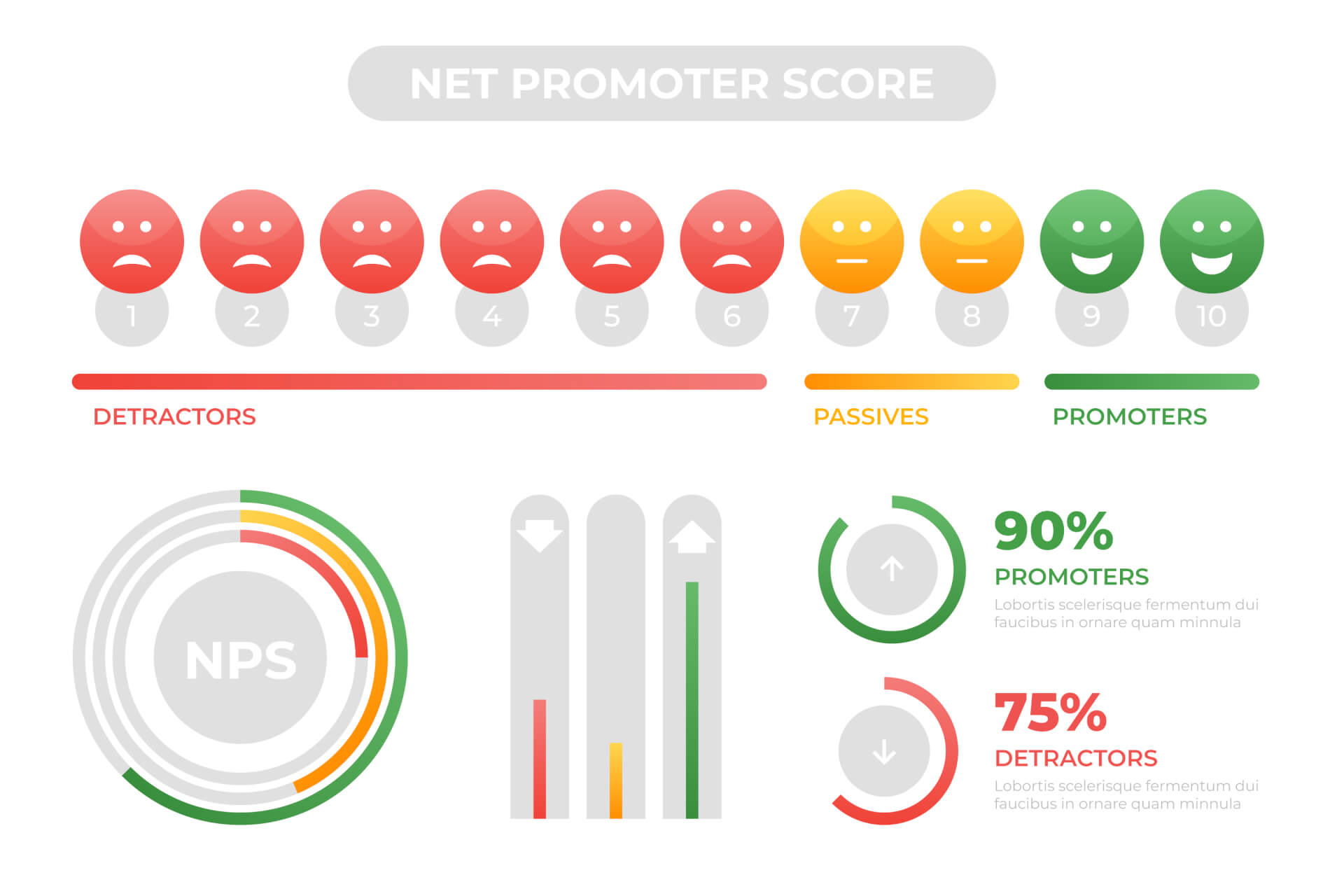Customer satisfaction is a critical component of any successful business strategy.
Understanding how customers feel about your product or service can help you improve your offerings, retain customers, and attract new ones. Among the various metrics used to gauge customer satisfaction, Net Promoter Score (NPS) stands out.
But how does NPS compare to other customer satisfaction metrics like Customer Satisfaction Score (CSAT) and Customer Effort Score (CES)?
This article explores the differences between NPS and other customer satisfaction metrics, highlighting their unique aspects, benefits, and limitations.

Table of Contents
What is Net Promoter Score (NPS)?
Definition and Origin
NPS, or Net Promoter Score, was introduced by Fred Reichheld in 2003 as a simple yet powerful tool to measure customer loyalty.
It is based on a single question:
"How likely are you to recommend our product/service to a friend or colleague?"
Respondents rate their likelihood on a scale of 0 to 10, which categorizes them into promoters, passives, and detractors.
 Calculation Method
Calculation Method
The NPS is calculated by subtracting the percentage of detractors (those who score 0-6) from the percentage of promoters (those who score 9-10). Passives (those who score 7-8) are not included in the calculation.
The resulting score ranges from -100 to 100.
The importance of NPS
NPS is widely regarded for its simplicity and its ability to provide a clear, actionable metric. It helps businesses identify their most loyal customers and those at risk of churning, thereby enabling targeted strategies to improve customer loyalty and satisfaction.
What is Customer Satisfaction Score (CSAT)?
Definition and Origin
CSAT, or Customer Satisfaction Score, is a metric that measures customer satisfaction with a specific interaction or overall experience. Unlike NPS, which asks about overall loyalty, CSAT typically involves more direct questions like
"How satisfied were you with our service today?"
Calculation Method
CSAT is usually calculated by taking the sum of all positive responses (usually defined as scores of 4 and 5 on a 5-point scale) and dividing it by the total number of responses, then multiplying by 100 to get a percentage.
The importance of CSAT
CSAT is highly versatile and can be used to measure satisfaction at various touchpoints in the customer journey. It provides immediate feedback and helps businesses identify specific areas for improvement.
What is Customer Effort Score (CES)?
Definition and Origin
CES, or Customer Effort Score, measures the ease of a customer's experience with a product or service. Introduced by the Corporate Executive Board (CEB) in 2010, CES focuses on the effort required by customers to resolve issues or complete tasks.
Calculation Method
CES is typically measured by asking customers to rate their agreement with the statement:
"The company made it easy for me to handle my issue."
Responses are usually on a 5-point scale from "Strongly Disagree" to "Strongly Agree."
Importance of CES
CES helps businesses understand friction points in the customer journey. Lower effort scores are correlated with higher customer loyalty, making CES a valuable metric for improving customer experiences and reducing churn.
Comparing NPS, CSAT, and CES
Key Differences
While NPS, CSAT, and CES all measure aspects of customer satisfaction, they each have unique focuses:
- NPS: Measures overall loyalty and likelihood of recommendation.
- CSAT: Measures satisfaction with specific interactions or experiences.
- CES: Measures the ease of customer interactions and resolutions.
Use Cases
- NPS: Best used for overall customer loyalty and advocacy assessment.
- CSAT: Ideal for measuring satisfaction at specific touchpoints or after particular interactions.
- CES: Useful for identifying and reducing friction in customer service processes.
Benefits and Limitations
- NPS: Simple to administer and provides a clear, actionable score, but may not capture specific pain points.
- CSAT: Offers detailed feedback on specific interactions but can be limited by the scope of questions asked.
- CES: Highlights areas of difficulty in the customer experience but does not provide a broad view of overall satisfaction.
The Role of NPS in Business Strategy

Improving Customer Loyalty
NPS helps businesses identify their most loyal customers, enabling them to create targeted loyalty programs and retention strategies.
Identifying Brand Advocates
Promoters identified through NPS can be leveraged as brand advocates, driving word-of-mouth marketing and referrals.
Strategic Decision Making
By tracking NPS over time, businesses can measure the impact of strategic initiatives and make informed decisions to enhance customer satisfaction.
Integrating NPS with Other Metrics

Combining NPS, CSAT, and CES
Using a combination of NPS, CSAT, and CES provides a comprehensive view of customer satisfaction and experience. This multi-metric approach helps businesses address both broad and specific areas of customer satisfaction.
Case Studies of Successful Integration
Numerous companies have successfully integrated these metrics to enhance their customer satisfaction strategies.
For instance, Amazon uses a combination of NPS and CES to continuously improve their customer service experience.
Best Practices for Integration
To effectively integrate these metrics, businesses should:
- Regularly collect and analyze data from multiple sources.
- Use the insights to drive continuous improvement.
- Ensure alignment between metrics and business objectives.
Conclusion
Understanding the differences between NPS and other customer satisfaction metrics like CSAT and CES is crucial for developing a well-rounded customer satisfaction strategy.
Each metric offers unique insights into customer experiences and, when used together, they provide a comprehensive view that can drive significant improvements in customer loyalty and satisfaction.
By leveraging these metrics effectively, businesses can enhance their customer relationships, foster loyalty, and ultimately drive growth.
 Reading recommendation: If this article helped you and you would like to find out more about the Net Promoter Score, continue reading here: “The Net Promoter Score – Basics and Areas of Application”
Reading recommendation: If this article helped you and you would like to find out more about the Net Promoter Score, continue reading here: “The Net Promoter Score – Basics and Areas of Application”